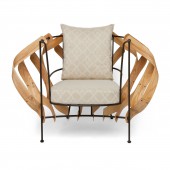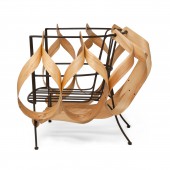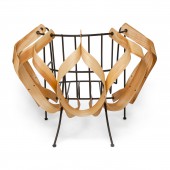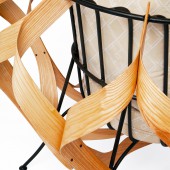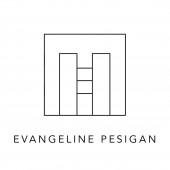Tirintas Lounge Chair by Evangeline Pesigan |
Home > Winners > #43853 |
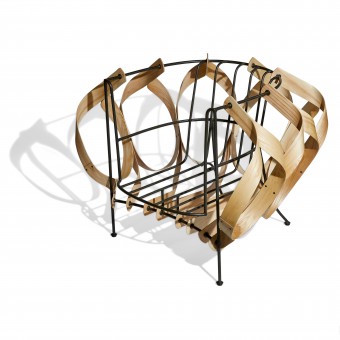 |
|
||||
| DESIGN DETAILS | |||||
| DESIGN NAME: Tirintas PRIMARY FUNCTION: Lounge Chair INSPIRATION: This piece focuses on combining modern production methods with traditional craftsmanship through a collaborative making process. By engaging local artisans to contribute to the development process, it challenges the misconceptions and role of design in revitalizing artisan craft cultures. The form is inspired by cultural influences from the Philippines, derived from traditional dwellings and basket weaving. The conceptual aim is a shared experience, experimentation and knowledge exchange of craft techniques transformed into a new cultural meaning. UNIQUE PROPERTIES / PROJECT DESCRIPTION: Tirintas lounge chair is an abstract structural frame chair in metal wrapped with an outer screen of wood veneer. The fluid form and dynamic interwoven lines highlight the rare artisanal skills and playful use of the materials' flexible properties. Each twist is individually layered and shaped by the hands of skilled artisans. It is a modern interpretation of traditional form that is versatile, functional, and distinctly defined by Filipino identity. OPERATION / FLOW / INTERACTION: The lounge chair is beautiful sculptured furniture intended to celebrate culture and community in the Philippines. The design process allowed for new techniques to foster meaningful interaction with local artisans. Its open structure invites the user to experience the craft and connect with its surroundings. The decorative screen provides cover and security while the seat is slightly tilted at the back and paired with cushions for optimal comfort to provide a relaxing position. PROJECT DURATION AND LOCATION: As part of a Masters degree, the project started in September 2013 and was finished in April 2015. It was designed in the UK where prototypes were developed while the final design was completed in the Philippines. It was exhibited in Central Saint Martins London Degree Show in June 2015 and London Design Festival in September 2015. FITS BEST INTO CATEGORY: Furniture Design |
PRODUCTION / REALIZATION TECHNOLOGY: The concept explored frame construction and manipulation of materials in the aspect of flexibility and versatility. The design was developed through model making and collaborative prototyping with artisans. Prototyping provided invaluable information exchange to the process and further cross learning about the overall capabilities of the artisans. Having tested the proposal through carcass prototypes, the artisans adapted local techniques used in basket weaving with industrial materials and developed new techniques in order to refine the final design. SPECIFICATIONS / TECHNICAL PROPERTIES: Outer Veneer Screen - Width 967mm x Depth 883.5 x Height 725mm Inner Metal Frame - Width 777.6mm x Depth 781.5 x Height 725mm Materials - Certified plantation wood veneer and metal frame TAGS: Furniture, Chair, Twisting, Metal, Veneer, Artisan Craft, Philippines, Tirintas RESEARCH ABSTRACT: Primary research: Involved ethnographic fieldwork and documentation to gain familiarity with the craft production setting in the Philippines and hands-on collaboration with artisans and organizations. Networking and interviews were conducted to help identify craft skills and experience of artisans willing to engage with the project as logistics, timeframe, resources and values had to be considered. Secondary research: Researched on existing crafts, country background, case studies, and cultural elements reflected in social activities to understand the visual metaphor of what Filipinos make of their environment, their use of pattern, color and materials, and its meaning in the cultural context. Prototyping: Created small-scale models to explore the form and flexibility of materials followed by a timber carcass to test design feasibility, proportions and comfort at 1:1 scale. The final piece adapted local techniques to create a decorative screen and frame while utilizing sustainable resources. CHALLENGE: The challenge was learning to collaborate with artisans with different experiences and ways of doing things. It was imperative to establish trust and a genuine connection whilst managing expectation, monitoring progress and communicating effectively due to geographical constraints and time differences as the process was being overseen from UK. During development, the complexity was in the final assembly primarily with the connection of the veneer to the metal frame and the application of the finishes to ensure the aesthetics and comfort of the seat. The process required exploring design alternatives to support the complex form and intricate details. ADDED DATE: 2015-11-27 01:27:36 TEAM MEMBERS (1) : IMAGE CREDITS: Image #1: Photographer James Barnett, Tirintas, 2015., Image #2-5: Creator Evangeline Pesigan, Tirintas, 2015. PATENTS/COPYRIGHTS: Copyrights belong to Evangeline Pesigan, 2015. |
||||
| Visit the following page to learn more: http://www.evangelinempesigan.com | |||||
| AWARD DETAILS | |
 |
Tirintas Lounge Chair by Evangeline Pesigan is Winner in Furniture Design Category, 2015 - 2016.· Press Members: Login or Register to request an exclusive interview with Evangeline Pesigan. · Click here to register inorder to view the profile and other works by Evangeline Pesigan. |
| SOCIAL |
| + Add to Likes / Favorites | Send to My Email | Comment | Testimonials | View Press-Release | Press Kit |

